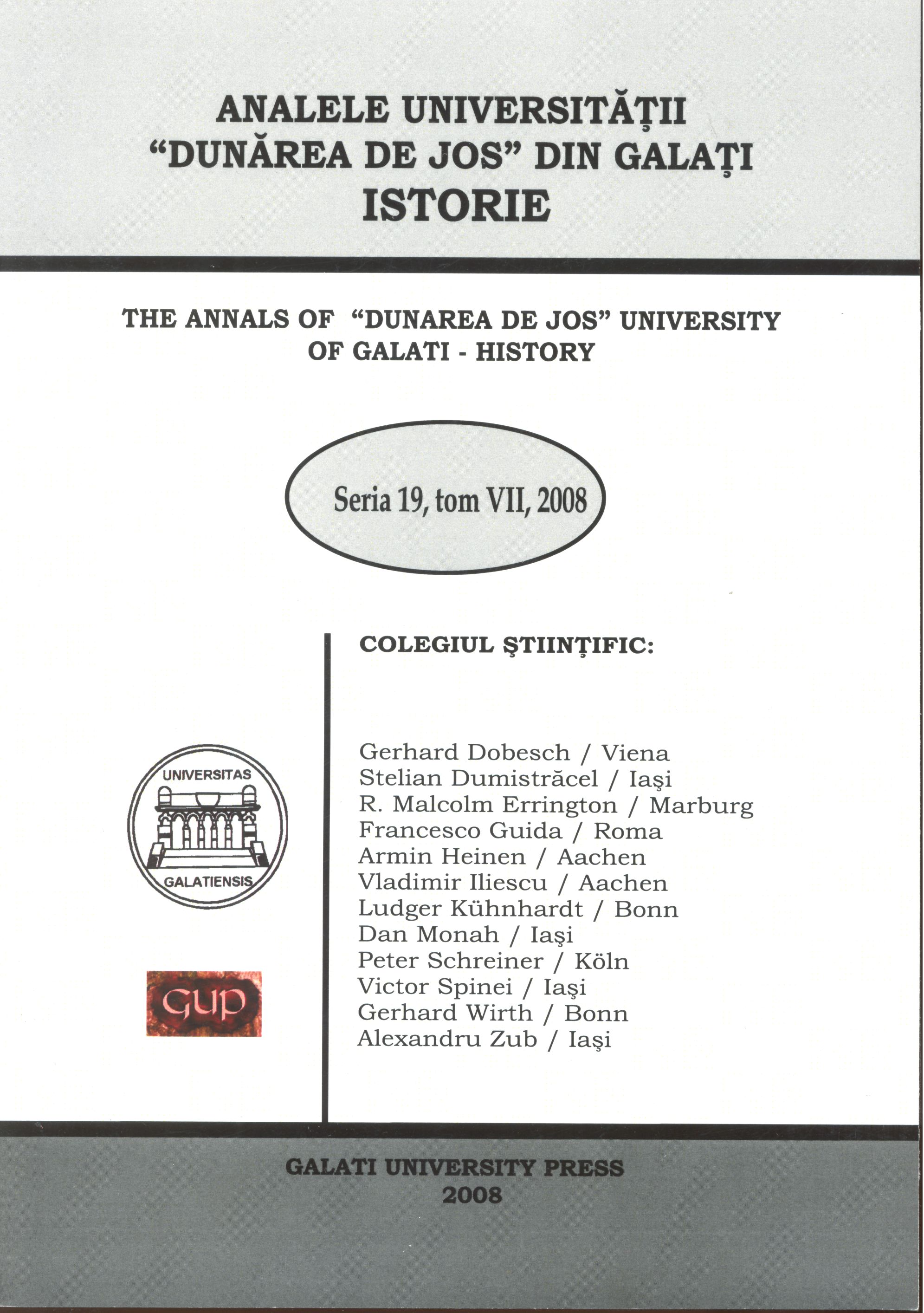Cauze ale asocierii la tron în Ţara Românească şi Moldova (sec. XIV-XVI)
Several causes regarding the association to the throne in Wallachia and Moldavia (14th-16th centuries)
Author(s): Liviu Marius IlieSubject(s): History
Published by: Galaţi University Press
Keywords: Wallachia; Moldavia; Romanian dynasties; association to the throne; political succession
Summary/Abstract: In medieval Wallachia and Moldavia, the association to the throne had mainly two causes: the nomination of the successor to the throne and the division of the princely prerogatives between two persons. The two countries confronted with an absence of a clear modality for the throne succession; during his life, the ruling prince chose a son or a brother who was to become the new prince of the country and associated him to his throne. Another motivation for the association to the throne in the Romanian medieval space was the change of the dynasty. The second important cause, which was met either at the beginning of the state or later was determined by the necessity of dividing the princely prerogatives; the co-sovereign was involved in the inner policy, but sometimes he could take part at the foreign policy as well. Sometimes the association could appear as a result of certain inner fights for the throne, such as happened in Moldavia between 1432 and 1457. The circulation of religious books, which described the association from other medieval countries, could also influence the spread of this institution in Wallachia and Moldavia.
Journal: Analele Universităţii Dunărea de Jos din Galaţi. Seria Istorie
- Issue Year: 2008
- Issue No: 07
- Page Range: 75-90
- Page Count: 16
- Language: Romanian

